J.M. Robison's Blog, page 9
January 1, 2017
Read a blurb, 1st chapter, and reviews for The War Queen
300 years ago, the people dethroned their king and queen to avoid another tyranny. The people instead nominate a State Head every three years and Altarn is the first female to hold the position. She’s used to tolerating the biases of men but Kaelin, the State Head of his territory, has declared her incompetent and has even, according to Altarn, threatened to steal her land – she believes he wants to make himself king. Believing she must “dethrone” Kaelin, Altarn rides to her last ally to ask for aid in the war against Kaelin she knows is coming. But in her absence an army launches an attack… and it’s not Kaelin’s.Taking advantage of the startling situation, Kaelin kidnaps Altarn so he can take her land without her in the way. Soon realizing he needs her help to fight this army instead, he releases her and, since Altarn’s army is too small to win the war alone, she is forced to accept his help, but payment for his help will be her land. No one believes Kaelin is secretly trying to make himself king, so after the battle is won, alone in her knowledge and lacking allies, Altarn must become the War Queen of legend to dethrone another king… though she unexpectedly dethrones his heart instead.NOTE: This is a clean romance; sex-free. Mild kissing.READ FIRST CHAPTERHEREREAD REVIEWSHEREPurchase book at below links. Need a free e-reader? Find oneHERE.KINDLE US($4.99)KINDLE UK(4.99 Euro)APPLE($4.99)NOOK($4.99)KOBO(read ebooks on desktop) ($4.99)SMASHWORDS($4.99)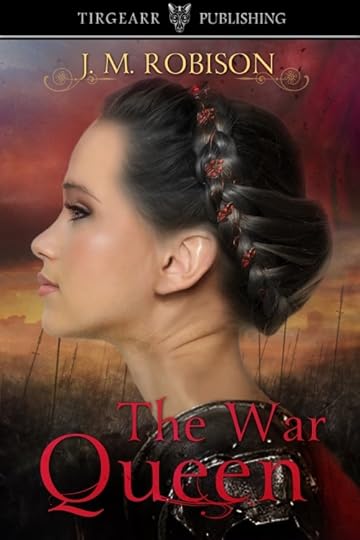

Published on January 01, 2017 01:36
Our need for drama in books
 Bob woke up. It was a beautiful day. His wife had breakfast ready for him. He loved her dearly. He drove to work in his corvette. He arrived at work. The job was really easy and he got paid extremely well, so well that his car and house were completely paid off and he went on vacation every month with his beautiful wife and 3 well behaved kids. He took a 5 hour lunch break and went home after the work day to a wonderful dinner and went to bed, falling asleep as his wife gave him a backrub. THE END.If you managed to choke through that horrible story and are still reading, you’ll now see why I say that humans crave drama.My story about Bob had no drama. His life was perfect. He had everything he wanted and didn’t have to work hard for it. As a reader, you might find that unrealistic. Further, you probably thought, “What the heck was the point? Bob didn’t do anything.”Why do writers slave over months and years to write a book, why do readers crave to read what they write? Harry Potter. Game of Thrones. The Hunger Games. Why do we love them so much?We love them because we love to be emotionally jarred. I don’t care if you are a peace-loving, God-fearing saint, you love drama.I can prove this because since Adam and Eve, the world has gone through periods of war and periods of peace, over and over; through the bible, through our own recorded history, and in our individual lives. It’s impossible for humans to maintain the same homeostasis. We war because we have this deep need to shake up our emotions. We have peace because our emotions need a break. And then we want them shaken up again. This cycle has been revolving since Cain killed his brother and to this day where many countries threaten with war. We’ve had our time of peace. We can’t maintain the same homeostasis forever.We write this drama into books, we read this drama in books. Have you ever gotten bored and then done something that got you into trouble? Did you HAVE to choose an activity that got you into trouble? Why didn’t you wash the dishes or draw a picture instead?Why do we ride roller coasters, sky dive, swim with the sharks? Because we all want to FEEL something, and those adrenaline rushes create a temporary dramatic event in our lives. You won’t be bored on a roller coaster, but you likely will doing the dishes.FINAL NOTE: Humans have this deep craving for drama. If we don’t have it in our own lives, then we want to read about it and watch it on TV, because we still get to feel the same drama the characters feel. We can’t maintain the same homeostasis forever.JM Robison is the author of The War Queen, published by Tirgearr Publishing.
Bob woke up. It was a beautiful day. His wife had breakfast ready for him. He loved her dearly. He drove to work in his corvette. He arrived at work. The job was really easy and he got paid extremely well, so well that his car and house were completely paid off and he went on vacation every month with his beautiful wife and 3 well behaved kids. He took a 5 hour lunch break and went home after the work day to a wonderful dinner and went to bed, falling asleep as his wife gave him a backrub. THE END.If you managed to choke through that horrible story and are still reading, you’ll now see why I say that humans crave drama.My story about Bob had no drama. His life was perfect. He had everything he wanted and didn’t have to work hard for it. As a reader, you might find that unrealistic. Further, you probably thought, “What the heck was the point? Bob didn’t do anything.”Why do writers slave over months and years to write a book, why do readers crave to read what they write? Harry Potter. Game of Thrones. The Hunger Games. Why do we love them so much?We love them because we love to be emotionally jarred. I don’t care if you are a peace-loving, God-fearing saint, you love drama.I can prove this because since Adam and Eve, the world has gone through periods of war and periods of peace, over and over; through the bible, through our own recorded history, and in our individual lives. It’s impossible for humans to maintain the same homeostasis. We war because we have this deep need to shake up our emotions. We have peace because our emotions need a break. And then we want them shaken up again. This cycle has been revolving since Cain killed his brother and to this day where many countries threaten with war. We’ve had our time of peace. We can’t maintain the same homeostasis forever.We write this drama into books, we read this drama in books. Have you ever gotten bored and then done something that got you into trouble? Did you HAVE to choose an activity that got you into trouble? Why didn’t you wash the dishes or draw a picture instead?Why do we ride roller coasters, sky dive, swim with the sharks? Because we all want to FEEL something, and those adrenaline rushes create a temporary dramatic event in our lives. You won’t be bored on a roller coaster, but you likely will doing the dishes.FINAL NOTE: Humans have this deep craving for drama. If we don’t have it in our own lives, then we want to read about it and watch it on TV, because we still get to feel the same drama the characters feel. We can’t maintain the same homeostasis forever.JM Robison is the author of The War Queen, published by Tirgearr Publishing.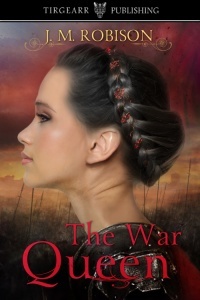
Published on January 01, 2017 01:25
December 31, 2016
Balancing descriptions: when and how much?
Description seems to be a topic of debate recently, everything from too much description to having no description at all.THERE IS A BALANCEUse descriptions like you use your shampoo: just enough to get the job done and only deep condition every once in a while.THERE IS A THING AS TOO MUCH:I tried 3 times to read Lord of the Rings but could never get passed the first 20 pages. I was sick of that forest already and feared what else J.R.R Tolkien was going to fixate on and describe next.I also read another book where the author spent a page and a half describing just the COLOR of her hair.THERE IS A THING AS TOO LITTLE:I read a blog post that said readers don’t give a crap about what things look like because they are going to make up their own descriptions anyway. I don’t believe this one bit. I am a reader and I WANT to know what the character looks like. If I have to imagine what the character looks like then I might as well imagine what the town looks like and imagine what happens in the rest of the story, and then I might as well not read the story and read something else that doesn't make me work for those details.Stephen King said: “Description should start with the writer and end with the reader.”WHAT IS THE BALANCE?ANSWER: WHEN IT IS RELEVANT AND FEELS NATURAL TO THE SCENE.POOR USE:(Character is eating dinner and you randomly decide to describe what she's wearing): She wore high heels and a red dress.A BETTER USE:She nearly fell off her high heels with how abruptly she stopped, the red skirt of her dress swishing around so it brushed his knee.Why is the 2nd example better? Because it's more relevant and naturally flows into the scene connected to it. She’s running and has to stop. If you’ve ever worn high heels, it IS possible to fall off them (which is relevant to the moment of her “stopping abruptly”) and the motion of stopping would make the dress swing around and touch the man's knee. You are able to sneak in the color of the dress as well into that.So what does Stephen King mean to start the description and let it end with the reader? I believe it is this: The dress is red. Let the reader fill in if it is made out of silk, lace, has beads. Unless the material of the dress is VITAL to some super story plot, you don’t need it. Now, mentioning how the dress dips low at the cleavage might be relevant if it allures a guy over to speak with red-wearing dress girl.Make sure the description serves a purpose. Cleavage showing on the dress serves a purpose if something/someone reacts to it. Saying it is red serves a purpose in starting the description so the reader can finish it.Can you still describe the material because you have a super-neat idea for a dress you want in your story? Sure. We writers love showing off our ideas. Why else would we write? Just still keep it natural and relevant to the scene. And don't OVER do it, either, Mr. Lord of the Rings!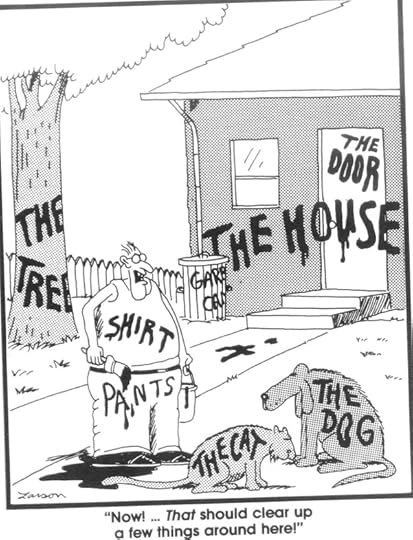 I read THRONE OF GLASS by Sarah Maas and the character drove me bonkers. Every time she put on a new dress (every day) she would stand in front of the mirror, smile, and describe what the dress looked like. I could never see the point in knowing exactly what every dress looked like. And I didn’t think standing in front of a mirror to describe them felt RELEVANT to the scene. Why does character care what her dress looks like? No one else is looking at it. Standing in front of a mirror to describe oneself IS a natural thing to do but not relevant to the purpose of wearing a dress.Now, standing in a ballroom and hoping the neck of your dress is not too low is relevant and natural to the scene (ballroom=description of dress. RELEVANT because people beside the character are looking at the dress and it may cause reactions for men to come over and interact with dress-wearing girl.)Another thing to note is WHO is doing the describing. If you've read Wizard's First Rule, Terry Goodkind did this well. The particular instance I'm talking of is this: Rachel lives in a castle. She's been there for some time. We see very, very little description of the castle from her, just enough to see where she's walking or sitting. The description is simple - table, floor, bed. This is fitting because in these chapters we are in Rachel's point of view and she is so used to the castle that it would be uncharacteristic for her to describe it in detail. She might have described it in detail if this was her first day, but we don't meet her during her first day. We meet her after she's been there a while.So then we go to Richard who has never been in Rachel's castle. He steps inside this same castle and description explodes as we are fed images of color and size. This is fitting, because he's never been here before. He goes on to describe vaulted ceilings with massive pillars ten people with linked hands wouldn't be able to reach around. The white and black marble floor, the meticulous garden outside. So while it would have felt natural and relevant to Rachel to describe the castle, Richard was the best fit to do so since it was his first visit.Think of a place you have been to many times. You're used to it now. You don't see the colors or the size. Now you bring a friend to this place, and they stop and stare and "ooh" and "aah" at the same thing you've seen over and over. Same thing with characters.OVERALL:Make sure description serves a purpose. Fit them in piece by piece as they become relevant to the moment and make sure it fits naturally in, and choose the best character to do this describing. Describing a dress while eating dinner is not relevant, but describing the dress while in a ballroom and a man comes over because he loves the color red, is. Start the description and let the reader finish it.JM Robison is the author ofThe War Queen, published by Tirgearr Publishing.
I read THRONE OF GLASS by Sarah Maas and the character drove me bonkers. Every time she put on a new dress (every day) she would stand in front of the mirror, smile, and describe what the dress looked like. I could never see the point in knowing exactly what every dress looked like. And I didn’t think standing in front of a mirror to describe them felt RELEVANT to the scene. Why does character care what her dress looks like? No one else is looking at it. Standing in front of a mirror to describe oneself IS a natural thing to do but not relevant to the purpose of wearing a dress.Now, standing in a ballroom and hoping the neck of your dress is not too low is relevant and natural to the scene (ballroom=description of dress. RELEVANT because people beside the character are looking at the dress and it may cause reactions for men to come over and interact with dress-wearing girl.)Another thing to note is WHO is doing the describing. If you've read Wizard's First Rule, Terry Goodkind did this well. The particular instance I'm talking of is this: Rachel lives in a castle. She's been there for some time. We see very, very little description of the castle from her, just enough to see where she's walking or sitting. The description is simple - table, floor, bed. This is fitting because in these chapters we are in Rachel's point of view and she is so used to the castle that it would be uncharacteristic for her to describe it in detail. She might have described it in detail if this was her first day, but we don't meet her during her first day. We meet her after she's been there a while.So then we go to Richard who has never been in Rachel's castle. He steps inside this same castle and description explodes as we are fed images of color and size. This is fitting, because he's never been here before. He goes on to describe vaulted ceilings with massive pillars ten people with linked hands wouldn't be able to reach around. The white and black marble floor, the meticulous garden outside. So while it would have felt natural and relevant to Rachel to describe the castle, Richard was the best fit to do so since it was his first visit.Think of a place you have been to many times. You're used to it now. You don't see the colors or the size. Now you bring a friend to this place, and they stop and stare and "ooh" and "aah" at the same thing you've seen over and over. Same thing with characters.OVERALL:Make sure description serves a purpose. Fit them in piece by piece as they become relevant to the moment and make sure it fits naturally in, and choose the best character to do this describing. Describing a dress while eating dinner is not relevant, but describing the dress while in a ballroom and a man comes over because he loves the color red, is. Start the description and let the reader finish it.JM Robison is the author ofThe War Queen, published by Tirgearr Publishing.
 I read THRONE OF GLASS by Sarah Maas and the character drove me bonkers. Every time she put on a new dress (every day) she would stand in front of the mirror, smile, and describe what the dress looked like. I could never see the point in knowing exactly what every dress looked like. And I didn’t think standing in front of a mirror to describe them felt RELEVANT to the scene. Why does character care what her dress looks like? No one else is looking at it. Standing in front of a mirror to describe oneself IS a natural thing to do but not relevant to the purpose of wearing a dress.Now, standing in a ballroom and hoping the neck of your dress is not too low is relevant and natural to the scene (ballroom=description of dress. RELEVANT because people beside the character are looking at the dress and it may cause reactions for men to come over and interact with dress-wearing girl.)Another thing to note is WHO is doing the describing. If you've read Wizard's First Rule, Terry Goodkind did this well. The particular instance I'm talking of is this: Rachel lives in a castle. She's been there for some time. We see very, very little description of the castle from her, just enough to see where she's walking or sitting. The description is simple - table, floor, bed. This is fitting because in these chapters we are in Rachel's point of view and she is so used to the castle that it would be uncharacteristic for her to describe it in detail. She might have described it in detail if this was her first day, but we don't meet her during her first day. We meet her after she's been there a while.So then we go to Richard who has never been in Rachel's castle. He steps inside this same castle and description explodes as we are fed images of color and size. This is fitting, because he's never been here before. He goes on to describe vaulted ceilings with massive pillars ten people with linked hands wouldn't be able to reach around. The white and black marble floor, the meticulous garden outside. So while it would have felt natural and relevant to Rachel to describe the castle, Richard was the best fit to do so since it was his first visit.Think of a place you have been to many times. You're used to it now. You don't see the colors or the size. Now you bring a friend to this place, and they stop and stare and "ooh" and "aah" at the same thing you've seen over and over. Same thing with characters.OVERALL:Make sure description serves a purpose. Fit them in piece by piece as they become relevant to the moment and make sure it fits naturally in, and choose the best character to do this describing. Describing a dress while eating dinner is not relevant, but describing the dress while in a ballroom and a man comes over because he loves the color red, is. Start the description and let the reader finish it.JM Robison is the author ofThe War Queen, published by Tirgearr Publishing.
I read THRONE OF GLASS by Sarah Maas and the character drove me bonkers. Every time she put on a new dress (every day) she would stand in front of the mirror, smile, and describe what the dress looked like. I could never see the point in knowing exactly what every dress looked like. And I didn’t think standing in front of a mirror to describe them felt RELEVANT to the scene. Why does character care what her dress looks like? No one else is looking at it. Standing in front of a mirror to describe oneself IS a natural thing to do but not relevant to the purpose of wearing a dress.Now, standing in a ballroom and hoping the neck of your dress is not too low is relevant and natural to the scene (ballroom=description of dress. RELEVANT because people beside the character are looking at the dress and it may cause reactions for men to come over and interact with dress-wearing girl.)Another thing to note is WHO is doing the describing. If you've read Wizard's First Rule, Terry Goodkind did this well. The particular instance I'm talking of is this: Rachel lives in a castle. She's been there for some time. We see very, very little description of the castle from her, just enough to see where she's walking or sitting. The description is simple - table, floor, bed. This is fitting because in these chapters we are in Rachel's point of view and she is so used to the castle that it would be uncharacteristic for her to describe it in detail. She might have described it in detail if this was her first day, but we don't meet her during her first day. We meet her after she's been there a while.So then we go to Richard who has never been in Rachel's castle. He steps inside this same castle and description explodes as we are fed images of color and size. This is fitting, because he's never been here before. He goes on to describe vaulted ceilings with massive pillars ten people with linked hands wouldn't be able to reach around. The white and black marble floor, the meticulous garden outside. So while it would have felt natural and relevant to Rachel to describe the castle, Richard was the best fit to do so since it was his first visit.Think of a place you have been to many times. You're used to it now. You don't see the colors or the size. Now you bring a friend to this place, and they stop and stare and "ooh" and "aah" at the same thing you've seen over and over. Same thing with characters.OVERALL:Make sure description serves a purpose. Fit them in piece by piece as they become relevant to the moment and make sure it fits naturally in, and choose the best character to do this describing. Describing a dress while eating dinner is not relevant, but describing the dress while in a ballroom and a man comes over because he loves the color red, is. Start the description and let the reader finish it.JM Robison is the author ofThe War Queen, published by Tirgearr Publishing.
Published on December 31, 2016 04:18
How to overcome the fear of letting strangers read your unpublished story
It's terrifying letting strangers review your work. Fears of, "Will they hate it?" will prevail. But these are only growing pains. You have to not care if strangers don't like it because that stranger's job IS to tell you what they think is broken in it. You can't fix what you don't know is broken. Once they tell you what they think is broken, fix it, and send it out to another reader who will point out other broken things, and then you fix those, and repeat steps 1 and 2.It's scary letting the world see it, but you must do it, because you are so familiar with your story that you stop seeing it, and you stop seeing its flaws. You MUST get unbiased eyes on your work from people who have zero care for your feelings (well, maybe a little care. Just make sure they are at least human.) Having mom read it is, though motivating, does zero to help make your writing better.My mother-in-law loves every book I’ve ever written (all 7) and says there’s nothing wrong with any of them. And then 5 beta readers tell me my character acts a bit beneath her age and is slightly unrealistic. (Gee, thanks mother-in-law.)But that’s okay. You get friends and family to read your work to motivate you, and you get strangers to read your work to tell you what needs to be fixed, because strangers may or may not motivate you and mom isn’t going to tell you what you should fix.It’s scary having other’s read your work, but you must. Trust me. I've gone through it already, and it gets easier the more you do it... even if you have to hide your head in the computer and wait for judgment to be over. To help this be less scary, don't show the world your first draft. Please. Your first draft is crap and everyone will see it and point it out as such and it will only discourage you. Polish it up a few times. Re-write it. I've never shown the world any of my books until the books have reached their 3rd draft (first draft, total re-write draft, and heavy polishing to equal 3.) That way I feel confident that beta readers won't find much. And they don't. But they still find things I missed - finding those things is their job - and I fix it without being discouraged about it. AND my readers love my writing. They wouldn’t have loved my writing had I shown them my 1st draft.FINAL NOTE:Just because you love your work and your mom loves your work doesn’t mean anyone else will. Make sure you are confident you’ve done everything you possibly can to make your work shine before you send it off to the world. It will save you from a lot of future discouragement if you do.JM Robison is the author ofThe War Queen, published by Tirgearr Publishing.
To help this be less scary, don't show the world your first draft. Please. Your first draft is crap and everyone will see it and point it out as such and it will only discourage you. Polish it up a few times. Re-write it. I've never shown the world any of my books until the books have reached their 3rd draft (first draft, total re-write draft, and heavy polishing to equal 3.) That way I feel confident that beta readers won't find much. And they don't. But they still find things I missed - finding those things is their job - and I fix it without being discouraged about it. AND my readers love my writing. They wouldn’t have loved my writing had I shown them my 1st draft.FINAL NOTE:Just because you love your work and your mom loves your work doesn’t mean anyone else will. Make sure you are confident you’ve done everything you possibly can to make your work shine before you send it off to the world. It will save you from a lot of future discouragement if you do.JM Robison is the author ofThe War Queen, published by Tirgearr Publishing.
 To help this be less scary, don't show the world your first draft. Please. Your first draft is crap and everyone will see it and point it out as such and it will only discourage you. Polish it up a few times. Re-write it. I've never shown the world any of my books until the books have reached their 3rd draft (first draft, total re-write draft, and heavy polishing to equal 3.) That way I feel confident that beta readers won't find much. And they don't. But they still find things I missed - finding those things is their job - and I fix it without being discouraged about it. AND my readers love my writing. They wouldn’t have loved my writing had I shown them my 1st draft.FINAL NOTE:Just because you love your work and your mom loves your work doesn’t mean anyone else will. Make sure you are confident you’ve done everything you possibly can to make your work shine before you send it off to the world. It will save you from a lot of future discouragement if you do.JM Robison is the author ofThe War Queen, published by Tirgearr Publishing.
To help this be less scary, don't show the world your first draft. Please. Your first draft is crap and everyone will see it and point it out as such and it will only discourage you. Polish it up a few times. Re-write it. I've never shown the world any of my books until the books have reached their 3rd draft (first draft, total re-write draft, and heavy polishing to equal 3.) That way I feel confident that beta readers won't find much. And they don't. But they still find things I missed - finding those things is their job - and I fix it without being discouraged about it. AND my readers love my writing. They wouldn’t have loved my writing had I shown them my 1st draft.FINAL NOTE:Just because you love your work and your mom loves your work doesn’t mean anyone else will. Make sure you are confident you’ve done everything you possibly can to make your work shine before you send it off to the world. It will save you from a lot of future discouragement if you do.JM Robison is the author ofThe War Queen, published by Tirgearr Publishing.
Published on December 31, 2016 04:09
Don't forget the hero/heroine imperfection
Imperfections are hard on people, whether it be a mental illness you were born with or a recent – but permanent – disability. They’re hard on the person it effects and it’s hard on those who witness it. Ever see someone missing an arm and you can’t stop staring at it? Or talked with someone who talks through a tube in their throat and it’s a struggle not to stare at the tube in their throat while you talk to them?As humans, we have this pre-conceived notion of what humans should look like. We judge those who have excessive girth around their stomachs, we judge those who’s tempers flare too easily, we judge those who are missing teeth, and have many skin imperfections. Somewhere in our programming, we have this visual of what humans should look like, and so when they don’t look like that it causes us to pause, reassess, and judge.And because we do this to our own humans, we also do it to our characters. Think of the movies you’ve seen or books you’ve read and consider how many of those characters had some physical/mental flaw.I can think of very few.Usually – especially Hollywood – they pick the hottest, strongest looking guy for the hero and the sexiest, prettiest female for the heroine, going so far as to dress her down so her best assets are flaunted. Because, apparently, an ugly hero is not taken as serious – or is as exciting – as a handsome one. Because being “ugly” is outside of our pre-programming for what humans should look like.So movie and books aside, think of your own life, your real life, and think of the heroes and heroines you associate with and admire. Are they handsome? Pretty? Strong? Or do they have real human flaws, like a mental illness, missing limbs, imbalanced emotions?Don’t fall into the Hollywood trap where the hero and heroine are perfect in every way imaginable, and the antagonists are the only ones who have a physical flaw and are ugly. Ever seen Hollywood crank out a handsome antagonist and ugly hero?It’s true, though, where the heroes are handsome, the antagonists are almost always ugly or have some physical mark. Think Voldemort (why is he missing a nose?) The Joker (why the scar and poor make-up job?) The Wicked Witch of the West (why is her skin green?) And… you got the idea.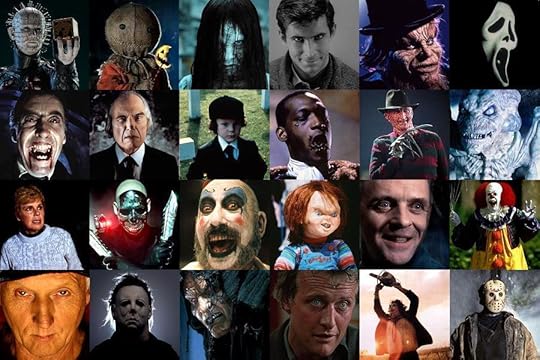 Because we have this pre-programming to think if you have a physical flaw you are not “human”, we get sucked into this trap to make the antagonists other-than-handsome because we try to make antagonists other-than-human.Don’t get sucked into this trap.Tap into your real life and pull from there. Who do you know who has PTSD? Cancer? Hearing loss? Blind?Characters are real to their story. So make them real. Give them imperfections. In a story of mine, my hero loses half his face and wears a mask the rest of the book. On the flip side, my antagonist is DEADLY handsome and has no apparent flaws – just to shake things up in the often one-sided writing world.I think the reason we also shy away from giving our characters flaws is because it is really close to taking care of a real human with a “flaw”. If taking care of someone paralyzed from the waist down is hard, why would you make it hard on yourself by giving your character the same thing when it’s SO much easier to make them perfect so you don’t have to baby your character’s injury?By keeping character flaws out of our books and movies, we continue to isolate the real humans with real flaws, making them seem less human than us, that maybe they are an antagonist because they aren’t perfect. STOP this.It IS hard having a character with a disability. I have a blind priest in The War Queen, and he often has chapters in his POV. Ever tried describing a scene using everything but sight? Hard. I had to figure out how he traveled, how he got around in unfamiliar places, how he recognized people, how he knew where he was if he was lost. Hard. Most writers don’t want to deal with it because it IS hard. How would you write a hero who couldn’t walk? How would he get around? Hard.Stop being weak sauce. Do the hard thing because it is REAL life. Don't always make your antagonist ugly. Don't always make your hero handsome. Be REAL. Most good people in life have vices. Most bad people in life have good qualities (See this otherblog postabout making realistic villains)JM Robison is the author ofThe War Queen, published by Tirgearr Publishing.
Because we have this pre-programming to think if you have a physical flaw you are not “human”, we get sucked into this trap to make the antagonists other-than-handsome because we try to make antagonists other-than-human.Don’t get sucked into this trap.Tap into your real life and pull from there. Who do you know who has PTSD? Cancer? Hearing loss? Blind?Characters are real to their story. So make them real. Give them imperfections. In a story of mine, my hero loses half his face and wears a mask the rest of the book. On the flip side, my antagonist is DEADLY handsome and has no apparent flaws – just to shake things up in the often one-sided writing world.I think the reason we also shy away from giving our characters flaws is because it is really close to taking care of a real human with a “flaw”. If taking care of someone paralyzed from the waist down is hard, why would you make it hard on yourself by giving your character the same thing when it’s SO much easier to make them perfect so you don’t have to baby your character’s injury?By keeping character flaws out of our books and movies, we continue to isolate the real humans with real flaws, making them seem less human than us, that maybe they are an antagonist because they aren’t perfect. STOP this.It IS hard having a character with a disability. I have a blind priest in The War Queen, and he often has chapters in his POV. Ever tried describing a scene using everything but sight? Hard. I had to figure out how he traveled, how he got around in unfamiliar places, how he recognized people, how he knew where he was if he was lost. Hard. Most writers don’t want to deal with it because it IS hard. How would you write a hero who couldn’t walk? How would he get around? Hard.Stop being weak sauce. Do the hard thing because it is REAL life. Don't always make your antagonist ugly. Don't always make your hero handsome. Be REAL. Most good people in life have vices. Most bad people in life have good qualities (See this otherblog postabout making realistic villains)JM Robison is the author ofThe War Queen, published by Tirgearr Publishing.
 Because we have this pre-programming to think if you have a physical flaw you are not “human”, we get sucked into this trap to make the antagonists other-than-handsome because we try to make antagonists other-than-human.Don’t get sucked into this trap.Tap into your real life and pull from there. Who do you know who has PTSD? Cancer? Hearing loss? Blind?Characters are real to their story. So make them real. Give them imperfections. In a story of mine, my hero loses half his face and wears a mask the rest of the book. On the flip side, my antagonist is DEADLY handsome and has no apparent flaws – just to shake things up in the often one-sided writing world.I think the reason we also shy away from giving our characters flaws is because it is really close to taking care of a real human with a “flaw”. If taking care of someone paralyzed from the waist down is hard, why would you make it hard on yourself by giving your character the same thing when it’s SO much easier to make them perfect so you don’t have to baby your character’s injury?By keeping character flaws out of our books and movies, we continue to isolate the real humans with real flaws, making them seem less human than us, that maybe they are an antagonist because they aren’t perfect. STOP this.It IS hard having a character with a disability. I have a blind priest in The War Queen, and he often has chapters in his POV. Ever tried describing a scene using everything but sight? Hard. I had to figure out how he traveled, how he got around in unfamiliar places, how he recognized people, how he knew where he was if he was lost. Hard. Most writers don’t want to deal with it because it IS hard. How would you write a hero who couldn’t walk? How would he get around? Hard.Stop being weak sauce. Do the hard thing because it is REAL life. Don't always make your antagonist ugly. Don't always make your hero handsome. Be REAL. Most good people in life have vices. Most bad people in life have good qualities (See this otherblog postabout making realistic villains)JM Robison is the author ofThe War Queen, published by Tirgearr Publishing.
Because we have this pre-programming to think if you have a physical flaw you are not “human”, we get sucked into this trap to make the antagonists other-than-handsome because we try to make antagonists other-than-human.Don’t get sucked into this trap.Tap into your real life and pull from there. Who do you know who has PTSD? Cancer? Hearing loss? Blind?Characters are real to their story. So make them real. Give them imperfections. In a story of mine, my hero loses half his face and wears a mask the rest of the book. On the flip side, my antagonist is DEADLY handsome and has no apparent flaws – just to shake things up in the often one-sided writing world.I think the reason we also shy away from giving our characters flaws is because it is really close to taking care of a real human with a “flaw”. If taking care of someone paralyzed from the waist down is hard, why would you make it hard on yourself by giving your character the same thing when it’s SO much easier to make them perfect so you don’t have to baby your character’s injury?By keeping character flaws out of our books and movies, we continue to isolate the real humans with real flaws, making them seem less human than us, that maybe they are an antagonist because they aren’t perfect. STOP this.It IS hard having a character with a disability. I have a blind priest in The War Queen, and he often has chapters in his POV. Ever tried describing a scene using everything but sight? Hard. I had to figure out how he traveled, how he got around in unfamiliar places, how he recognized people, how he knew where he was if he was lost. Hard. Most writers don’t want to deal with it because it IS hard. How would you write a hero who couldn’t walk? How would he get around? Hard.Stop being weak sauce. Do the hard thing because it is REAL life. Don't always make your antagonist ugly. Don't always make your hero handsome. Be REAL. Most good people in life have vices. Most bad people in life have good qualities (See this otherblog postabout making realistic villains)JM Robison is the author ofThe War Queen, published by Tirgearr Publishing.
Published on December 31, 2016 03:15
When to use a comma
Commas:a) Put a comma before the conjunctions and, but, for, or, nor, so and yet when they connect two independent clauses (sentences that can stand alone). Example: My favorite color is purple, but I do like red.b) Separate three or more items in a series with a comma. Example: My favorite colors are purple, red, blue, and green.c) Put a comma after an introductory word or phrase that tells when or why. Example: Whatever the case, this isn't working.d) Use a comma to set off interrupters or appositives. Example: "Karl walked into the room, the place looked a lot messier than when he was here a moment ago, and cringed.e) Use a comma to set off names or terms of endearment/titles in dialogue. Example: "Oh, Brit, you always know how to make me laugh."f) Use a comma to show a natural pause in speech or internal thoughts. Example: Well, this is going to hurt!g) Use a comma between two or more adjectives if you could use the word and between them. Example: His tan, muscled arms made my mouth water.Or: It was a dark, stormy night (HEY, we can try to be cliché!)h) To set off a date when the full date is provided (month, day and year). Example: I was born on July 7, 1980, but I don't remember.i) To separate street, city and state in an address.Semi-Colons:Semi-colons can be used to separate two related and complete sentences. Example: We're not scouting for an occasional stray daemon at Arland's base near the Clearing; we're seeking out enemy strongholds in hopes to take them down.(List courtesy of my editor, Sharon)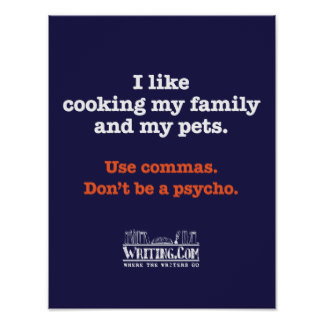
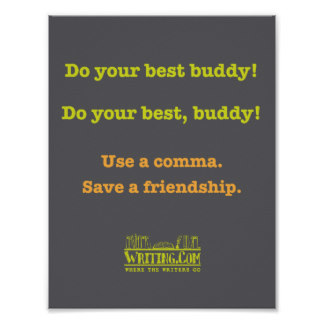
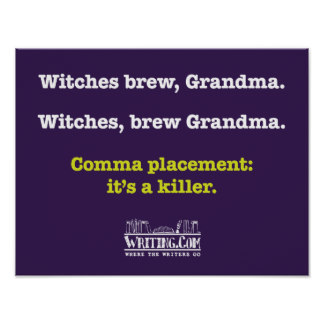
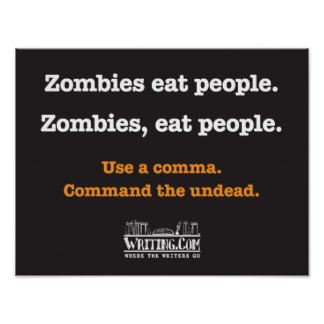 JM Robison is the author ofThe War Queen, published by Tirgearr Publishing.
JM Robison is the author ofThe War Queen, published by Tirgearr Publishing.



 JM Robison is the author ofThe War Queen, published by Tirgearr Publishing.
JM Robison is the author ofThe War Queen, published by Tirgearr Publishing.
Published on December 31, 2016 01:17
Telling and overused words
 I borrowed this from my editor:When a sentence is written correctly, the use of “he thought” or “he watched” (for example) is redundant. Search for telling phrases that include these and other words like them and revise them to eliminate the telling:BelievedConcludedFeltGuessedHeardHopedKnewMusedNoticedRealizedRecognizedRecalledReflectedSawThoughtWantedWatchedWishedWonderedGazedWorriedSensedExaminedBegan toStarted toCausedMade him/her/proper nameCouldn’t help butIt’s always better to show emotion with body language, an action tag, behavior or deep POV/inner dialogue and narration. Also take a look at theEmotional Thesaurus.Phrases like “seemed to,” “tried to,” “began to”, “made or made to”, “gave” as in gave a small smile and the like are telling words that get in the way of the action and make your writing weaker —delete the filters and go right into the action to make the sentence more immediate and active.Began To, Nearly, About To, Almost: These are also signs of telling words, vague, and sometimes passive. Instead of saying "She almost cried", tell us "The burden of the news crushed her, but she held the pain all inside, never allowing a tear to escape."EXAMPLE: Her spicy perfume seemed to surround his head.BETTER: Her spicy perfume surrounded his head.EXAMPLE: Paul tried to start again on the report.BETTER: Paul started again on the report.Use action tags.FILLER WORDS:Many times, especially with that and had, these little filler words are just that—filler and should be removed as they weaken the impact of your sentences.AlmostRatherSort ofQuitethatsowelljustreallyoutthatthenaswhilewhichaboutveryallbutupdownhad (generally had is needed only once in a sentence)andofoverIt and It Was: Try to replace the word 'it' with a more visual word. (It was cold. The dreary day was cold.OVER USED WORDS:Move/MovedPush/PushedPress/PressedReach/ReachedPull/PulledStep/Stepped (the new walked)Gaze - still on list but mostly replaced by lookHardSoftLongStoodHeavySuddenly – remove all.These are the most frequently seen. And pack a double whammy—telling and overused.Grab/Grabbed/GrabbingLook/Lo... – when used as a connectorGentlySilentlySoftlyQuicklyQuietlyAnd sometimes unnecessary as in reach/reached/reaching:EXAMPLE: She reached over and grabbed his arm.BETTER: She grabbed his arm.EXAMPLE: He reached into his pocket, retrieving his pipe.BETTER: He retrieved his pipe from his pocket.Next up, closely tied to overuse, is repetition. Look for repeated words in sentences, paragraphs, and scenes.JM Robison is the author ofThe War Queen, published by Tirgearr Publishing.
I borrowed this from my editor:When a sentence is written correctly, the use of “he thought” or “he watched” (for example) is redundant. Search for telling phrases that include these and other words like them and revise them to eliminate the telling:BelievedConcludedFeltGuessedHeardHopedKnewMusedNoticedRealizedRecognizedRecalledReflectedSawThoughtWantedWatchedWishedWonderedGazedWorriedSensedExaminedBegan toStarted toCausedMade him/her/proper nameCouldn’t help butIt’s always better to show emotion with body language, an action tag, behavior or deep POV/inner dialogue and narration. Also take a look at theEmotional Thesaurus.Phrases like “seemed to,” “tried to,” “began to”, “made or made to”, “gave” as in gave a small smile and the like are telling words that get in the way of the action and make your writing weaker —delete the filters and go right into the action to make the sentence more immediate and active.Began To, Nearly, About To, Almost: These are also signs of telling words, vague, and sometimes passive. Instead of saying "She almost cried", tell us "The burden of the news crushed her, but she held the pain all inside, never allowing a tear to escape."EXAMPLE: Her spicy perfume seemed to surround his head.BETTER: Her spicy perfume surrounded his head.EXAMPLE: Paul tried to start again on the report.BETTER: Paul started again on the report.Use action tags.FILLER WORDS:Many times, especially with that and had, these little filler words are just that—filler and should be removed as they weaken the impact of your sentences.AlmostRatherSort ofQuitethatsowelljustreallyoutthatthenaswhilewhichaboutveryallbutupdownhad (generally had is needed only once in a sentence)andofoverIt and It Was: Try to replace the word 'it' with a more visual word. (It was cold. The dreary day was cold.OVER USED WORDS:Move/MovedPush/PushedPress/PressedReach/ReachedPull/PulledStep/Stepped (the new walked)Gaze - still on list but mostly replaced by lookHardSoftLongStoodHeavySuddenly – remove all.These are the most frequently seen. And pack a double whammy—telling and overused.Grab/Grabbed/GrabbingLook/Lo... – when used as a connectorGentlySilentlySoftlyQuicklyQuietlyAnd sometimes unnecessary as in reach/reached/reaching:EXAMPLE: She reached over and grabbed his arm.BETTER: She grabbed his arm.EXAMPLE: He reached into his pocket, retrieving his pipe.BETTER: He retrieved his pipe from his pocket.Next up, closely tied to overuse, is repetition. Look for repeated words in sentences, paragraphs, and scenes.JM Robison is the author ofThe War Queen, published by Tirgearr Publishing.
Published on December 31, 2016 01:05
Mining for meaning
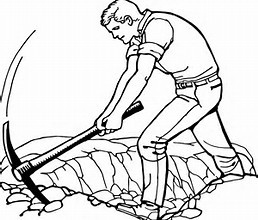 What we like to read changes every few years. In the 8th century people liked Beowulf. In 1600 people liked Shakespear (written in poetry or plays). In 1954 people liked Lord of the Rings (very heavy in description). And now we’ve changed again to where description is getting smaller and smaller because readers want action action action.So it’s not enough anymore to say, "The stab wound hurt" "he was angry" "she was in love". You need to "mine" the words hurt, angry, love – dig deep into what those words ARE:Instead of:The stab wound hurtTry instead:White hot fire sizzled deep inside the wound (this is what the word "hurt" might look like once you mine down to the bare bones of the meaning of the word.)Instead of:She was angryTry instead:A fanged monster clinched teeth around her calm and shook until she was poisoned with the need for vengeance. (This is what the word "angry" might look like once you mine down to the bare bones of the meaning of the word. Naturally, yours will be different than mine.)Instead of:She was in loveTry instead:A whisper teased for her to dwell on deliciously forbidden things that got her heart to race so she had to walk around to expel the burning energy. (This is what the word "love" might look like once you mine down to the bare bones of the meaning of the word.)Flesh out the story. Mine those words and figure what they mean and use that meaning instead of the definition.Need further help? Contact me directly. I’ll brainstorm with you on facebook at thislink.JM Robison is the author ofThe War Queen, published by Tirgearr Publishing.
What we like to read changes every few years. In the 8th century people liked Beowulf. In 1600 people liked Shakespear (written in poetry or plays). In 1954 people liked Lord of the Rings (very heavy in description). And now we’ve changed again to where description is getting smaller and smaller because readers want action action action.So it’s not enough anymore to say, "The stab wound hurt" "he was angry" "she was in love". You need to "mine" the words hurt, angry, love – dig deep into what those words ARE:Instead of:The stab wound hurtTry instead:White hot fire sizzled deep inside the wound (this is what the word "hurt" might look like once you mine down to the bare bones of the meaning of the word.)Instead of:She was angryTry instead:A fanged monster clinched teeth around her calm and shook until she was poisoned with the need for vengeance. (This is what the word "angry" might look like once you mine down to the bare bones of the meaning of the word. Naturally, yours will be different than mine.)Instead of:She was in loveTry instead:A whisper teased for her to dwell on deliciously forbidden things that got her heart to race so she had to walk around to expel the burning energy. (This is what the word "love" might look like once you mine down to the bare bones of the meaning of the word.)Flesh out the story. Mine those words and figure what they mean and use that meaning instead of the definition.Need further help? Contact me directly. I’ll brainstorm with you on facebook at thislink.JM Robison is the author ofThe War Queen, published by Tirgearr Publishing.
Published on December 31, 2016 00:55
Learn about the different POV's and tenses
 POV:Point of View (everything happening as one character sees it. EX: I saw it, she saw it, you saw it)TENSE:past, present, or future (EX: saw, see, will see)Here are examples of different ways to use POV and TENSE:1st POV, PAST TENSE:“I thrashed with every part of my body that could move but too many hands held me fast. The sack around my head tightened, controlled me, angled my body as someone else grabbed my legs and lowered my boots to the floor. I bucked and coiled but arms and hands clamped me tightly. (Hint: attach “ed” at the end of verbs, and change words like “hold” to “held”.)1st POV, PRESENT TENSE:“I thrash with every part of my body that could move but too many hands hold me fast. The sack around my head tightens, controlling me, angling my body as someone else grabs my legs and lowers my boots to the floor. I buck and coil but arms and hands clamp me tightly. (Hint: attach an “s” or “ing” to the end of verbs, or take off the “ed”. Also change words like “held” to “hold.)1st POV, FUTURE TENSE:“I will thrash with every part of my body that will move but too many hands might hold me fast. The sack around my head could likely tighten and control me, while someone else might grab my legs and lower my boots to the floor. If that happens, I will buck and coil if arms and hands don’t clamp me tightly. (Hint: add words like “will” “could likely” “might”)2nd POV, PAST TENSE:“You thrashed with every part of your body that could move but too many hands held you fast. The sack around your head tightened, controlled you, angled your body as someone else grabbed your legs and lowered your boots to the floor. You bucked and coiled but arms and hands clamped you tightly.2nd POV, PRESENT TENSE:“You thrash with every part of your body that could move but too many hands hold you fast. The sack around your head tightens, controls you, angles your body as someone else grabs your legs and lowers your boots to the floor. You buck and coil but arms and hands clamp you tightly. (Ever read a “choose your own adventure” book? That is where this comes into play)2nd POV, FUTURE TENSE:“You will thrash with every part of your body that can move but too many hands might hold you fast. The sack around your head could likely tighten, controlling you, angling your body so someone else might grab your legs and lower your boots to the floor. You might buck and coil but arms and hands will likely clamp you too tightly.3rd POV, PAST TENSE:“He thrashed with every part of his body that could move but too many hands held him fast. The sack around his head tightened, controlled him, angled his body as someone else grabbed his legs and lowered his boots to the floor. He bucked and coiled but arms and hands clamped him tightly. (This is most the most popular of POV and tenses used in fiction books.)3rd POV, PRESENT TENSE:“He thrashes with every part of his body that could move but too many hands hold him fast. The sack around his head tightens, controls him, angles his body as someone else grabs his legs and lowers his boots to the floor. He bucks and coils but arms and hands clamp him tightly.3rd POV, FUTURE TENSE:“He might thrash with every part of his body that can move but too many hands will probably hold him fast. The sack around his head will likely tighten and control him, angling his body as someone else might grab his legs and lower his boots to the floor. He might buck and coil but arms and hands will likely clamp him tightly.As you can see, some POV’s and tenses are more practical than others, and some don’t work at all. Now for the rule breaking…HOW TO BREAK THESE RULES:1)1st person present tense is strictly for one character, and nothing in the book happens unless that character knows it. So what if you have 2 main characters and you want to write in 1st POV present tense? A good book to look at is “These Broken Stars,” by Amie Kaufman and Meagan Spooner. They have 2 main characters and the book is written 1st POV, present tense. How they did it, is every other chapter is written in the other main character’s POV, and it worked out beautiful.2)Another rule breaker is “The Help” written by Tate Taylor. There are 3 main characters, and the book is written in 1st POV. The author got away with this because each character has their own special way of speaking (think of uneducated deep south black woman for one character, and college savvy white girl for another character). So when the character spoke, you could tell who it was. Plus, naming the chapter after that character so there were no confusions helped too.3)In my own book, The War Queen, it is written in 3rd person, past tense. The first 50 or so pages of the book is all written in Altarn’s POV. Then I start writing some chapters in Kaelin’s POV after page 50. It’s easier to get away with multiple points of views in 3rd person, but usually a rule for that is to introduce those characters who will hold a POV in the book at the very beginning so the reader can start warming up to them. But I broke this rule for the War Queen. While all of my POV holding characters were introduced in the beginning chapters of my book, I held out on Kaelin’s POV until after page 50 (for obvious reasons). So since the reader was not expecting his POV and I didn’t want to confuse them by randomly giving him his own POV chapter, right before his chapter begins, I inserted a nice blank page that says “Part II”. This lets the reader know that something is about to change, so when they turn the page and see Kaelin’s POV chapter, they aren’t confused.4)So what’s a catch-all rule breaker? Just make sure you do not confuse the reader. As long as you are clear about which character holds the POV, you are fine.NOTE:Don’t mix tenses (meaning, don’t have one chapter present tense and the other chapter past tense). I read a self-published book where the author wrote some chapters in 1st person, present tense and other chapters in 3rd person, past tense. It makes for a severely choppy flow and yanks the reader out of the “reading rhythm” every time they force their brains to readjust to a new reading style, which takes a couple of pages for the adjustment to take effect. (Self-published books have a bad reputation already, and it’s because of things like this.). Readers read to relax and enjoy. If they have to work to understand what you wrote, they won’t read you.JM Robison is the author ofThe War Queen, published by Tirgearr Publishing.
POV:Point of View (everything happening as one character sees it. EX: I saw it, she saw it, you saw it)TENSE:past, present, or future (EX: saw, see, will see)Here are examples of different ways to use POV and TENSE:1st POV, PAST TENSE:“I thrashed with every part of my body that could move but too many hands held me fast. The sack around my head tightened, controlled me, angled my body as someone else grabbed my legs and lowered my boots to the floor. I bucked and coiled but arms and hands clamped me tightly. (Hint: attach “ed” at the end of verbs, and change words like “hold” to “held”.)1st POV, PRESENT TENSE:“I thrash with every part of my body that could move but too many hands hold me fast. The sack around my head tightens, controlling me, angling my body as someone else grabs my legs and lowers my boots to the floor. I buck and coil but arms and hands clamp me tightly. (Hint: attach an “s” or “ing” to the end of verbs, or take off the “ed”. Also change words like “held” to “hold.)1st POV, FUTURE TENSE:“I will thrash with every part of my body that will move but too many hands might hold me fast. The sack around my head could likely tighten and control me, while someone else might grab my legs and lower my boots to the floor. If that happens, I will buck and coil if arms and hands don’t clamp me tightly. (Hint: add words like “will” “could likely” “might”)2nd POV, PAST TENSE:“You thrashed with every part of your body that could move but too many hands held you fast. The sack around your head tightened, controlled you, angled your body as someone else grabbed your legs and lowered your boots to the floor. You bucked and coiled but arms and hands clamped you tightly.2nd POV, PRESENT TENSE:“You thrash with every part of your body that could move but too many hands hold you fast. The sack around your head tightens, controls you, angles your body as someone else grabs your legs and lowers your boots to the floor. You buck and coil but arms and hands clamp you tightly. (Ever read a “choose your own adventure” book? That is where this comes into play)2nd POV, FUTURE TENSE:“You will thrash with every part of your body that can move but too many hands might hold you fast. The sack around your head could likely tighten, controlling you, angling your body so someone else might grab your legs and lower your boots to the floor. You might buck and coil but arms and hands will likely clamp you too tightly.3rd POV, PAST TENSE:“He thrashed with every part of his body that could move but too many hands held him fast. The sack around his head tightened, controlled him, angled his body as someone else grabbed his legs and lowered his boots to the floor. He bucked and coiled but arms and hands clamped him tightly. (This is most the most popular of POV and tenses used in fiction books.)3rd POV, PRESENT TENSE:“He thrashes with every part of his body that could move but too many hands hold him fast. The sack around his head tightens, controls him, angles his body as someone else grabs his legs and lowers his boots to the floor. He bucks and coils but arms and hands clamp him tightly.3rd POV, FUTURE TENSE:“He might thrash with every part of his body that can move but too many hands will probably hold him fast. The sack around his head will likely tighten and control him, angling his body as someone else might grab his legs and lower his boots to the floor. He might buck and coil but arms and hands will likely clamp him tightly.As you can see, some POV’s and tenses are more practical than others, and some don’t work at all. Now for the rule breaking…HOW TO BREAK THESE RULES:1)1st person present tense is strictly for one character, and nothing in the book happens unless that character knows it. So what if you have 2 main characters and you want to write in 1st POV present tense? A good book to look at is “These Broken Stars,” by Amie Kaufman and Meagan Spooner. They have 2 main characters and the book is written 1st POV, present tense. How they did it, is every other chapter is written in the other main character’s POV, and it worked out beautiful.2)Another rule breaker is “The Help” written by Tate Taylor. There are 3 main characters, and the book is written in 1st POV. The author got away with this because each character has their own special way of speaking (think of uneducated deep south black woman for one character, and college savvy white girl for another character). So when the character spoke, you could tell who it was. Plus, naming the chapter after that character so there were no confusions helped too.3)In my own book, The War Queen, it is written in 3rd person, past tense. The first 50 or so pages of the book is all written in Altarn’s POV. Then I start writing some chapters in Kaelin’s POV after page 50. It’s easier to get away with multiple points of views in 3rd person, but usually a rule for that is to introduce those characters who will hold a POV in the book at the very beginning so the reader can start warming up to them. But I broke this rule for the War Queen. While all of my POV holding characters were introduced in the beginning chapters of my book, I held out on Kaelin’s POV until after page 50 (for obvious reasons). So since the reader was not expecting his POV and I didn’t want to confuse them by randomly giving him his own POV chapter, right before his chapter begins, I inserted a nice blank page that says “Part II”. This lets the reader know that something is about to change, so when they turn the page and see Kaelin’s POV chapter, they aren’t confused.4)So what’s a catch-all rule breaker? Just make sure you do not confuse the reader. As long as you are clear about which character holds the POV, you are fine.NOTE:Don’t mix tenses (meaning, don’t have one chapter present tense and the other chapter past tense). I read a self-published book where the author wrote some chapters in 1st person, present tense and other chapters in 3rd person, past tense. It makes for a severely choppy flow and yanks the reader out of the “reading rhythm” every time they force their brains to readjust to a new reading style, which takes a couple of pages for the adjustment to take effect. (Self-published books have a bad reputation already, and it’s because of things like this.). Readers read to relax and enjoy. If they have to work to understand what you wrote, they won’t read you.JM Robison is the author ofThe War Queen, published by Tirgearr Publishing.
Published on December 31, 2016 00:45
Why you must know your book's genre
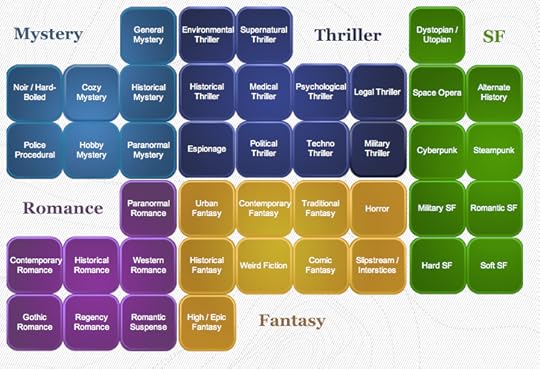 I didn't know what genre The War Queen was about. I knew it was a New Adult, because my main characters are 29 and 35 and I knew it was a fantasy because it was my own fictional world.So I started pitching it as such. After 40 rejections, it took 2 beta readers to tell me "what a great romance!" and 3 months of change of heart to accept I wrote a romance (I hate romances). But it was true. I looked up the elements for a romance and I qualified.Crap. I didn't want to write a romance. But that's okay. Remember, you are not a writer. You are the historian for another world. You are just writing down what that world decides to show you and let you hear. And that world chose me to be their writer to write their romance story.So I changed my pitch. “The War Queen, new adult fantasy romance at 109,000 words....” and after I realized the correct genre, I had 2 agents request the entire manuscript. I was rejected 40 times previously because, you guessed it, I was pitching the wrong agents. I needed to pitch fantasy romance agents, not fantasy agents, and it's because of the publisher I queried that publishes fantasy romances that I finally got offered a contract. Don't believe me when I say that knowing your genre matters? Read theblog.JM Robison is the author ofThe War Queen, published by Tirgearr Publishing.
I didn't know what genre The War Queen was about. I knew it was a New Adult, because my main characters are 29 and 35 and I knew it was a fantasy because it was my own fictional world.So I started pitching it as such. After 40 rejections, it took 2 beta readers to tell me "what a great romance!" and 3 months of change of heart to accept I wrote a romance (I hate romances). But it was true. I looked up the elements for a romance and I qualified.Crap. I didn't want to write a romance. But that's okay. Remember, you are not a writer. You are the historian for another world. You are just writing down what that world decides to show you and let you hear. And that world chose me to be their writer to write their romance story.So I changed my pitch. “The War Queen, new adult fantasy romance at 109,000 words....” and after I realized the correct genre, I had 2 agents request the entire manuscript. I was rejected 40 times previously because, you guessed it, I was pitching the wrong agents. I needed to pitch fantasy romance agents, not fantasy agents, and it's because of the publisher I queried that publishes fantasy romances that I finally got offered a contract. Don't believe me when I say that knowing your genre matters? Read theblog.JM Robison is the author ofThe War Queen, published by Tirgearr Publishing.
Published on December 31, 2016 00:36



